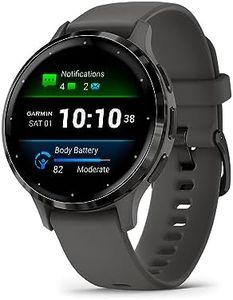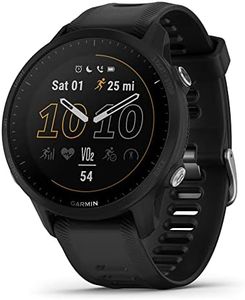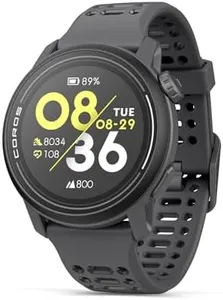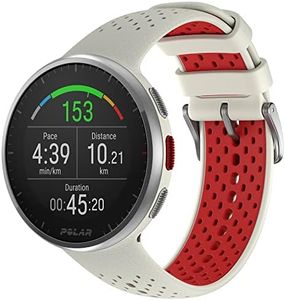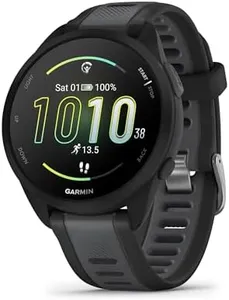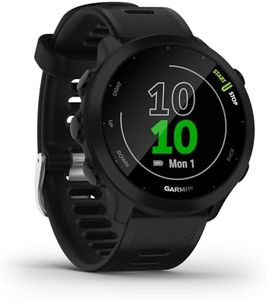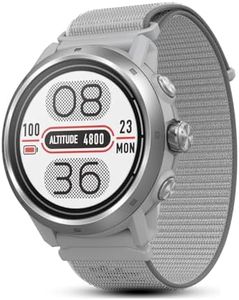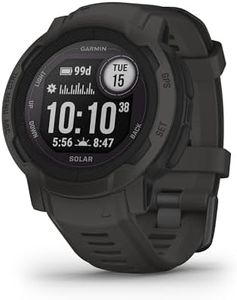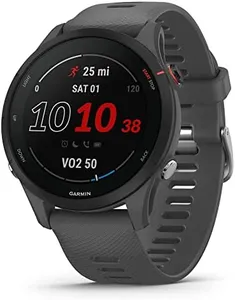We Use CookiesWe use cookies to enhance the security, performance,
functionality and for analytical and promotional activities. By continuing to browse this site you
are agreeing to our privacy policy
10 Best Running Watches
From leading brands and best sellers available on the web.Buying Guide for the Best Running Watches
Choosing the best running watch can greatly enhance your fitness journey, providing metrics and insights to help track your performance and reach your goals. To find the right device, think about how you plan to use it—whether you're training for races, running casually, or seeking all-around fitness improvement. The right features can support your routines, keep you motivated, and help prevent injuries. Below are the most important specifications to consider and how to match them to your needs.GPS AccuracyGPS is the feature that tracks your running route and measures your distance and speed. Accurate GPS means your stats and maps will be trustworthy. Some watches have basic GPS, while others offer advanced systems with multiple satellites for city or trail running. If you mostly run in open spaces, basic GPS is often enough; but if you’re running in cities, forests, or hilly landscapes where signal is more challenging, a more advanced and reliable GPS system will better serve you.
Heart Rate MonitoringHeart rate sensors measure your pulse during your activities, giving you valuable information about your effort and helping you train safely and effectively. Watches may read heart rate from your wrist or work with chest straps for higher accuracy. If you want general wellness tracking, wrist-based heart monitoring is usually sufficient. For more serious training or if you need precise tracking for health reasons, support for external chest straps is beneficial.
Battery LifeBattery life tells you how long the watch can operate before needing a recharge, both in normal use and with GPS turned on. Some watches last only a few hours with GPS, while others can go for days. If you do mostly short runs, battery life is less critical, but for marathon training, ultrarunning, or multi-day adventures, choose a watch that offers extended battery performance with GPS enabled.
Water ResistanceWater resistance determines whether you can use the watch in the rain, during sweat-heavy runs, or while swimming. Ratings vary, with basic splash protection on some and full swim-ready capability on others. If you only run in fair weather and rarely get your watch wet, lower water resistance may suffice. If you run in all conditions or want to track swimming, look for higher-rated water-resistant or waterproof models.
Training and Recovery MetricsSome running watches offer in-depth training feedback, like estimated VO2 max, training load, recovery suggestions, and personalized workout recommendations. These help you balance effort, understand progress, and prevent burnout or injury. If you enjoy structured training plans or want to improve your performance systematically, find a watch that provides detailed metrics. For occasional run tracking, simpler models without advanced analytics might be enough.
Display and UsabilityA watch’s display affects how easy it is to read stats during a run, especially in different lighting conditions. Options range from simple monochrome screens to vibrant color touch displays. Touchscreens may seem appealing, but physical buttons often work better when you're sweaty or wearing gloves. If you want to glance at your data frequently or run in bright sunlight, prioritize readability and intuitive controls for your use case.
Connectivity and App IntegrationWatches connect to smartphones and apps to sync data, analyze workouts, and enable features like notifications or music controls. Some offer direct music storage or payments. Consider how much you rely on smartphone features or third-party fitness apps. If you like reviewing workouts in detail, sharing runs, or staying connected without carrying your phone, ensure the watch supports your favorite platforms and features.
